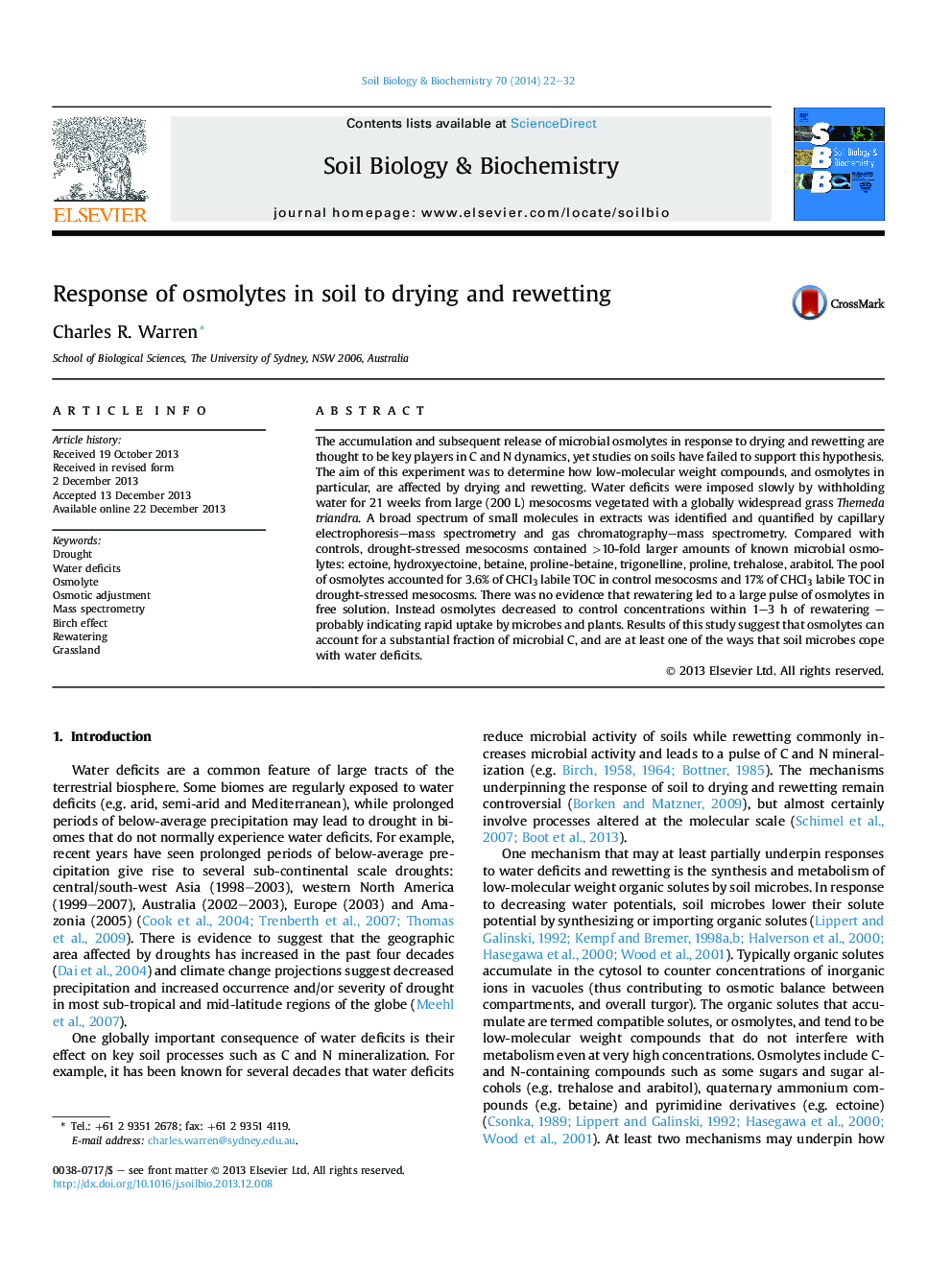| Article ID | Journal | Published Year | Pages | File Type |
|---|---|---|---|---|
| 8364878 | Soil Biology and Biochemistry | 2014 | 11 Pages |
Abstract
The accumulation and subsequent release of microbial osmolytes in response to drying and rewetting are thought to be key players in C and N dynamics, yet studies on soils have failed to support this hypothesis. The aim of this experiment was to determine how low-molecular weight compounds, and osmolytes in particular, are affected by drying and rewetting. Water deficits were imposed slowly by withholding water for 21 weeks from large (200Â L) mesocosms vegetated with a globally widespread grass Themeda triandra. A broad spectrum of small molecules in extracts was identified and quantified by capillary electrophoresis-mass spectrometry and gas chromatography-mass spectrometry. Compared with controls, drought-stressed mesocosms contained >10-fold larger amounts of known microbial osmolytes: ectoine, hydroxyectoine, betaine, proline-betaine, trigonelline, proline, trehalose, arabitol. The pool of osmolytes accounted for 3.6% of CHCl3 labile TOC in control mesocosms and 17% of CHCl3 labile TOC in drought-stressed mesocosms. There was no evidence that rewatering led to a large pulse of osmolytes in free solution. Instead osmolytes decreased to control concentrations within 1-3Â h of rewatering - probably indicating rapid uptake by microbes and plants. Results of this study suggest that osmolytes can account for a substantial fraction of microbial C, and are at least one of the ways that soil microbes cope with water deficits.
Keywords
Related Topics
Life Sciences
Agricultural and Biological Sciences
Soil Science
Authors
Charles R. Warren,
